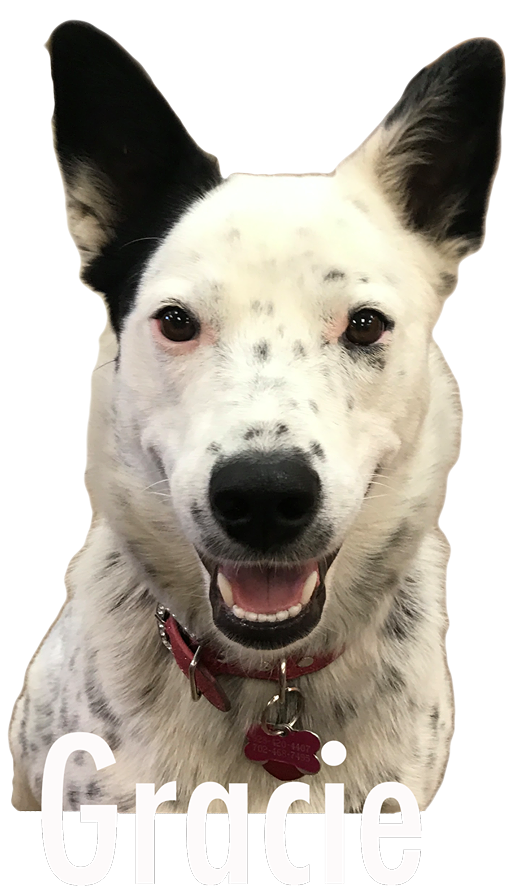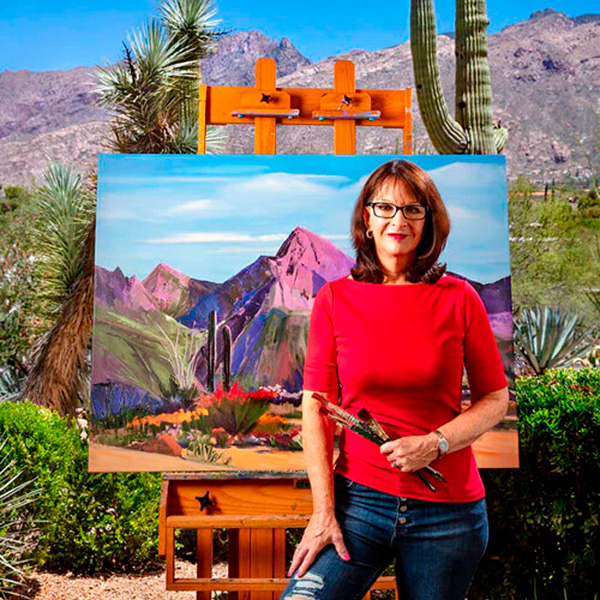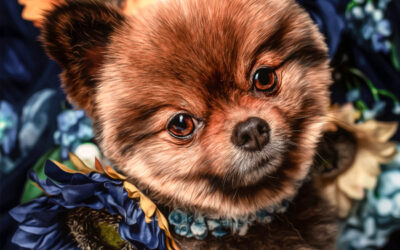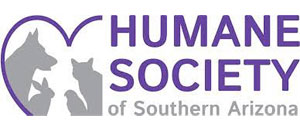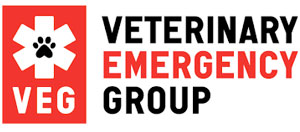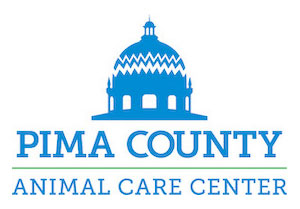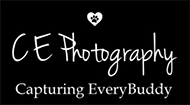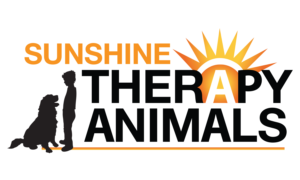We’re talking about Diana Madaras, celebrated watercolorist, community service member whose art has benefited more than 100 charities, recipient of endless accolades and awards, and dog mom to Maxwell Smart, our insanely cute cover dog.
Her life has been both interesting and rewarding. It’s also been filled with risks and a lot of hard work. But when it’s all said and done, it’s doubtful she’d have it any other way.
When asked if she’d ever considered following in his footsteps, she laughingly recalled, “I couldn’t possibly, because when I was there, I constantly found myself in the bathroom crying all the time.” Her sensitivity to suffering didn’t exactly lend itself to a great career fit.
After high school, she got approved for an assistantship at U of A and ended up with a full ride. It’s a paid academic appointment made to a graduate student that involves part-time teaching or research. In her case, she was compelled to instruct undergrads in tennis, fencing, and badminton classes in order to comply with the requirements. She went on to graduate with a Master’s degree in biomechanics in 1977.
It all worked out quite nicely for Tucson because it was her time here that allowed her to fall in love with the area and eventually put down roots. She had a successful career in sports marketing for many years, where she made quite an impact, but it wasn’t what she was supposed to be doing.
While she’d long enjoyed indulging her creative side through art, it would be a month-long painting holiday to Greece in 1993 that would change the trajectory of her life.
One day while getting some painting tips, a contemporary of hers, Chuck Albanese, a professor of architecture and fellow painter, suggested she join him and his wife, Claire, on an upcoming trip to Greece. The couple took a group of U of A students there every summer to paint for a month, and he thought she might benefit from the experience.
During college, her medium had always been acrylics, and she very much wanted to master watercolors, which she’d found vexing up to that point. What better place than the Mediterranean, with its royal blue waters and iconic scenery, to hone your skills? It took a bit of cajoling over many months, but she finally agreed.
Long story short, while she was soaking up that scenery, filled with inspiration from everything she’d learned, she had an epiphany of sorts and decided to sell her business to devote her time to painting. But she wasn’t content to merely paint. There was a lot more in store for her, Tucson, and the rest of the world.
Jumping back to when she was a kid in New Jersey helping her dad for just a moment, one of her jobs was taking care of injured and orphaned wildlife that would get dropped off. Those experiences with both wild and domestic animals gave her a deep connection to them that was one of the driving forces behind what she’d do next.
In 1999, Diana combined her passions by opening her award-winning gallery and starting Art for Animals, a foundation that’s provided her with a more direct way to assist those in need. In addition to rehabilitating wildlife, it supports the prevention of cruelty to animals and saving pets from euthanasia. In only 15 years, they’ve donated more than $200,000 to a number of groups that help “ill, injured, and abandoned animals, including dogs, cats, horses, and African wildlife.”
Art for Animals is funded with proceeds from select events at Madaras Gallery as well as private donations. One highly successful fundraiser saw $80,000 raised, but we’re getting ahead of ourselves.
In 2008, she was once again presented with a chance to visit distant lands in the name of her artistic pursuits. Only on this occasion, it would be a pay-it-forward opportunity versus a learning vacay, and it would be Africa instead of Greece. A lifelong dream of hers, this time Diana didn’t hesitate to accept the offer. In fact, she jumped at the chance.
In exchange for a free photo safari, courtesy of Terry von Guilleaume, fellow cause supporter and owner of tour company Destination Southern Africa, she would create a series of paintings influenced by the sights and sounds of her adventure to be auctioned off during a fundraiser known as the African Sojourn Art Show. Once word got out, several other prominent female artists would end up getting on board as well.
Benefitting children and wildlife, Diana would end up donating 100% of the proceeds from her paintings to three charities in S. Africa and two groups in Tucson.
She got another opportunity to use her art to the benefit of animals when Hughes Federal Credit Union inquired about using one of her paintings on their debit cards. The deal was that they’d donate $5 to the organization of her choosing each time her design was selected. She provided them with a sweet image depicting a baby bobcat, and this year they’re cutting a check to the Tucson Wildlife Center for $12,000!
Diana is especially fond of the center, where she once brought a hawk in for medical attention. TWC managed to save it and release it back into the wild. She regularly raises money for them through their annual benefit dinner held at La Paloma, which she works on all year. There’s a video Diana’s sister, television producer Sandy Levine, created in recognition of her lengthy work with animals.
During the short film, Sandy aptly points out that the path Diana has taken mirrors her dad’s legacy of helping animals. Diana explained that he lived just long enough to see the poignant video completed.
In addition to her upbringing working with animals, Diana’s always had dogs, cats, and horses in her life. They have her heart, as she told us, and being able to make a difference in their lives is something she holds dear. Her current dog, Maxwell Smart, is a rescue discovered wandering the streets of Nogales. Max was picked up by animal control, who was going to put him down.
Thanks to Amy Cubillas, that didn’t happen. Described by Diana as “a hands-on matchmaker” who helped her get Max, Amy runs a group called The Sanctuary Project, whose main goal is helping dogs in southern Arizona. Part of the no-kill dog movement, she and her sister Cyndi founded the group, which has since grown to multiple states.
When Max came into Diana’s life, he was just 6 months old and malnourished, weighing only 26 pounds. Six months later, as she tells it, he’s a full-bodied pup of 50 pounds and one happy, healthy canine. Max is also extremely intelligent — so much so that a trainer told her he was the smartest dog she’s ever worked with. Eager to learn and trainable, he’s also a little monkey.
As an example, dear, sweet Max got into her studio one day and managed to get ahold of a tube of red paint, which he then proceeded to smear all over her bedroom before eating the remainder of the tube. Covered in red from his neck to his paws, it looked like a blood-red murder scene that understandably jarred her.
She initially assumed Max was bleeding out before realizing it was just paint. She immediately called poison control, and he obviously survived, but he left a trail of red droppings all over the yard as a reminder. “He’s Marley meets Lassie,” she shared with a laugh. He’s even eaten her Invisaligns, but of course she still adores him.
While he’s her only pup at the moment, she had two more dogs up until last year that sadly passed. She is definitely open to more pets, though.
When it comes to animal rescue, Diana had some suggestions for folks who’d like to get involved.
“Every group needs help raising money, either through donations or working on a fundraiser for them. Also, shelters need volunteers to walk dogs and socialize with cats. People can also donate food to Cody’s Friends or the S. AZ. Animal Food Bank. Another idea is delivering food to pets for shut-ins. There are just so many different ways to help, like donating products and items to silent auctions to raise funds. The need is there, and the possibilities are almost endless.”
Moving forward, Diana’s next series of paintings will combine her love of the desert with her love of African animals. She has an annual show at her gallery on October 14, so if you attend, you might be able to see one or two teasers there. If you’d like to learn about her trips in greater detail, go to the Diana Madaras Blog on WordPress. In addition to her many gifts, she’s also a talented writer.
